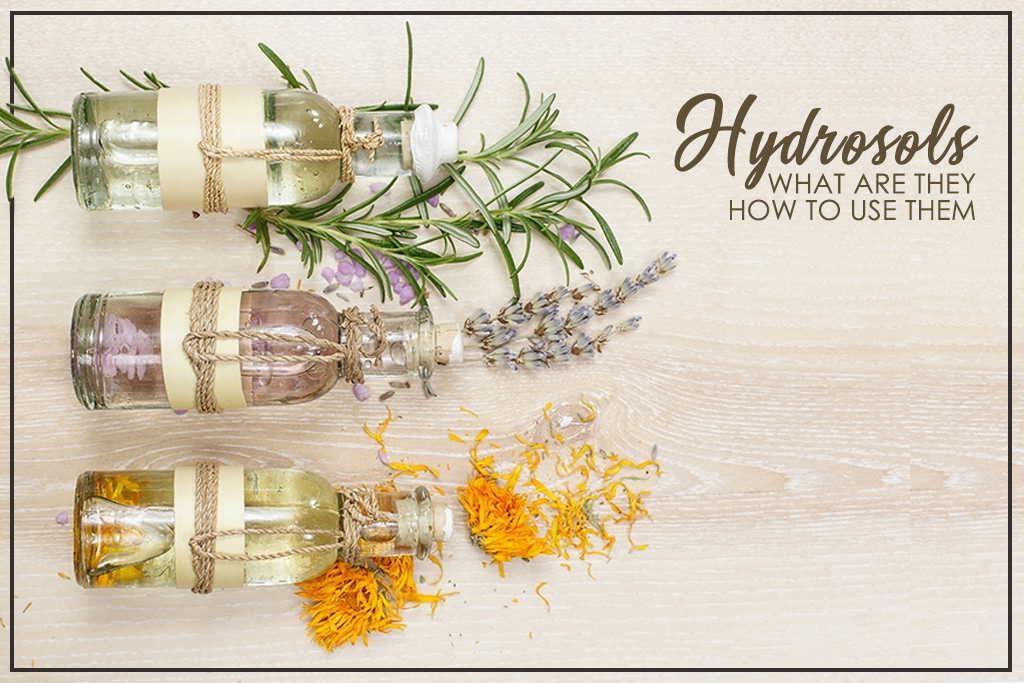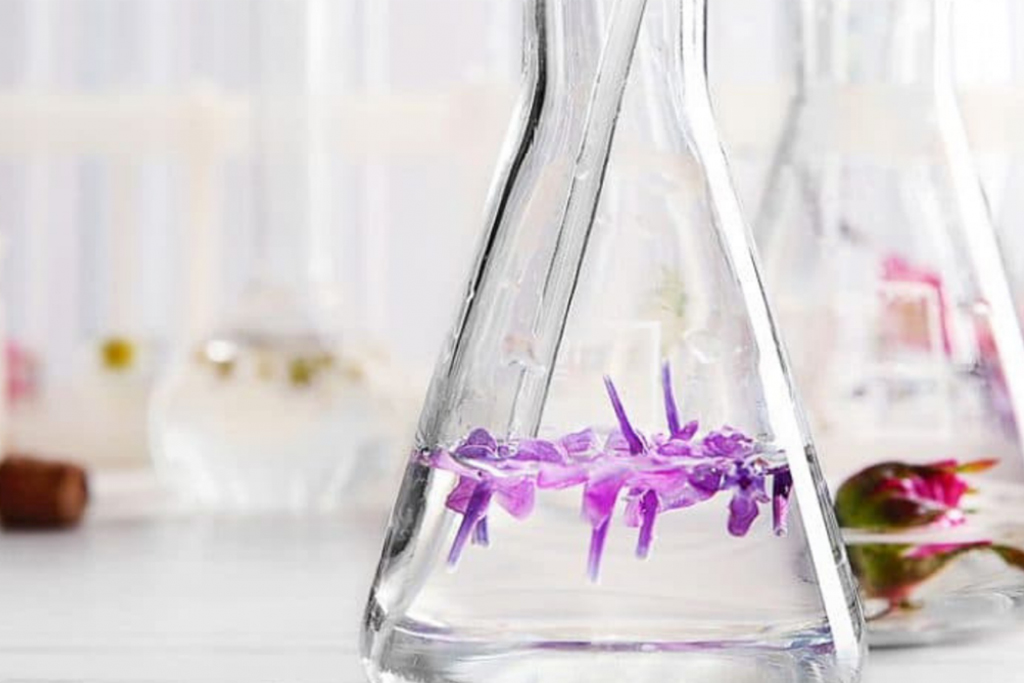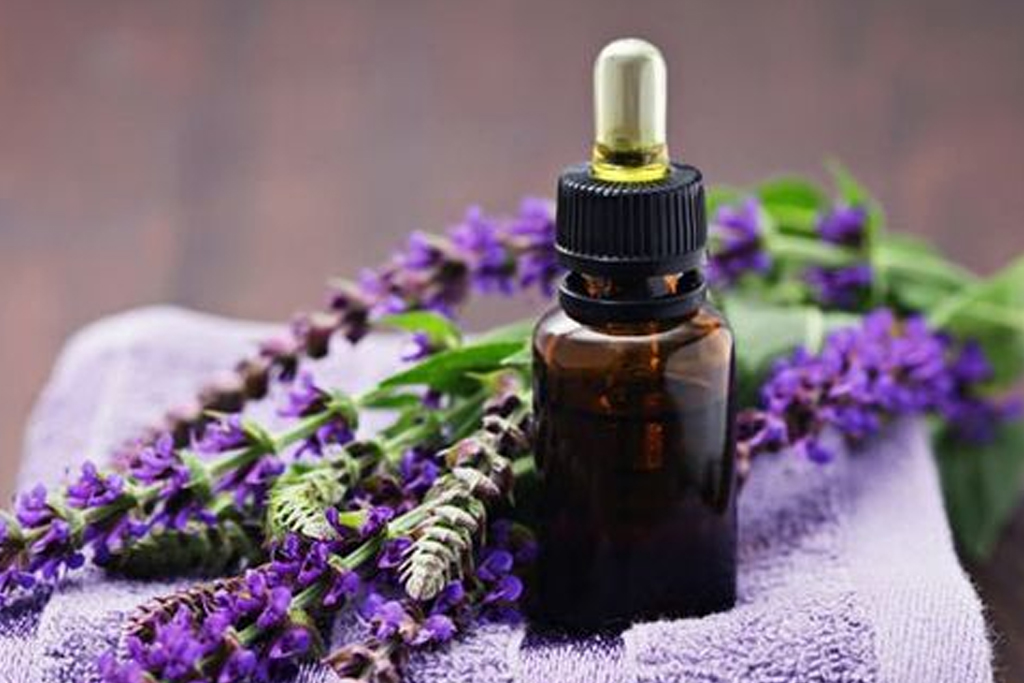You might have heard of the word Hydrosols and wondered what is it exactly? The term Hydrosol is derived from the Latin word “hydro” and “sol”, meaning “water solution”.
Hydrosol is the water which is left behind after extracting essential oil through water/steam distillation. Hydrosols are also known as “Hydrolats” or “Distillate Waters”. They are aromatic and have the appearance and consistency of water.
Hydrosols are wonderful products with varied benefits. They can be used on their own as part of beauty routine or incorporated into recipes for creams, shampoo, lotions, clay masks and so much more. They have been used since ancient times for their skin benefits and properties. In ancient Egypt, Cleopatra was known to be very fond of Rose Hydrosol.

WHAT IS A HYDROSOL?
Hydrosols are also often referred to as “Floral Water”. This is mainly as they are extracted after distilling fresh flowers, leaves, fruits and other plant materials. When a plant is distilled either through water or steam distillation, you get two end products: Essential oil and Condensate water. Essential oil contains oil soluble constituents of the plant and Condensate water contains water soluble constituents along with microscopic droplets of the essential oil. This condensate water is termed as Hydrosol.
Essential oils and Hydrosols have similar therapeutic properties. However, hydrosols are much less concentrated as compared to essential oils. Their aroma is subtle and soft as compared to the aroma of essential oils. They also have higher water content, are gentle on the skin and can be directly applied on the skin.
HOW HYDROSOLS ARE MADE

Many people believe that hydrosols can be easily made by boiling plants and filtering them. But the truth is far from that. Making hydrosol requires proper equipment’s and techniques. Most of the Hydrosols are made through steam distillation just like essential oils. In fact, hydrosols and essential oils are the by products of the same process.
To make hydrosol, first water is heated to produce steam which rises with the pressure and passes through the plants from underneath. As the steam passes through them, it picks up molecules which will yield both essential oil and hydrosol. This steam then passes though another vessel containing cold water. The cold water lowers the temperature of the steam, condensing into a liquid containing essential oil and hydrosol. This liquid is passed to another vessel where it is left to settle in. Oil being lighter, rises to the surface from where it is filtered and separated. The water, laden with water soluble plant molecules is collected. This is called hydrosol.
HOW TO USE HYDROSOLS
Hydrosols are highly beneficial for inclusion in toners, creams, lotions, body sprays, room sprays and other skin care products in place of water. They impact the aroma and beneficial properties of the product. They are also generally much safer than essential oils for use with babies. This is the list of how hydrosols can be used in various ways:
- Whichever recipe contains water, it can be replaced with a hydrosol. This will not only bring a nice aroma, but the end product will also benefit from the therapeutic properties of the hydrosol.
- If you want to scent your hair, all you need to do is gently spray hydrosol onto damp/dry hair. In addition to adding a mild fragrance, many hydrosols are beneficial for your hair as well.
- You can also add them to your shower, bath or sauna
- Hydrosols can also be used as toners. Simply lightly spray on your face after cleansing.
- They are also wonderful when used as wetting agent in clay facials
- You can create wonderful perfumes by combining essential oils with hydrosols. You can formulate a number of recipes like perfumes, body mists, linen mists, rooms mists etc.
Thus, hydrosols can be used in many different ways and there are many more ways to use hydrosols. So, put in your thinking cap and start experimenting with this wonderful ingredient.
HOW TO STORE HYDROSOLS
The presence of water in any product increases the risk of bacterial contamination. Since hydrosols are preservative free, it is important to take care of their storage and prevent them from going bad. Always store them in dark glass bottles and keep them in cool, dark location away from direct sunlight.

SHELF LIFE OF HYDROSOL
Hydrosols are more fragile than essential oils as they do not contain concentrated anti-microbial properties which essential oils possess and are therefore more prone to rapid degeneration. As hydrosols are water based, a suitable preservative must be used for preserving products which contain hydrosol.
Hydrosols is a wonderful product which has been with us since generations. Hydrosols are now increasingly becoming popular in all natural and organic products. They are less concentrated and more mellow as compared to essential oils but still posses the healing and aromatic applications of aromatherapy and are therefore often used in place of water in natural products.
Disclaimer: The information provided on this page is for informational and educational purposes. I am not a medical professional and highly recommend consulting a doctor before using oils as part of any medical treatment.
